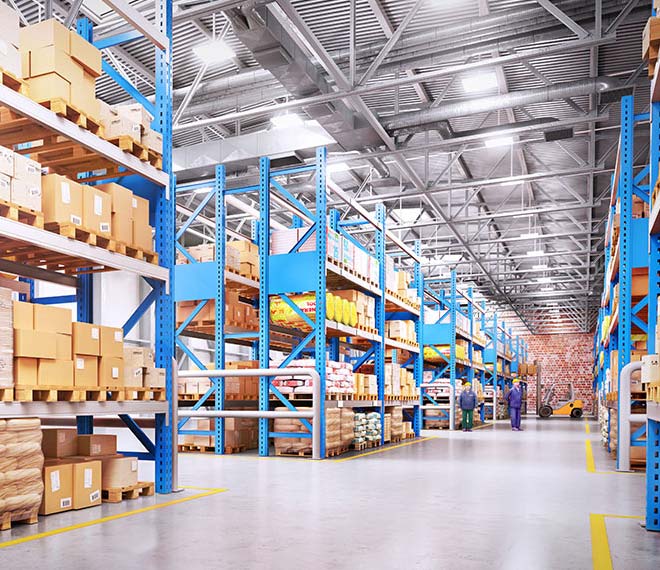Around the world, Automated Warehouse Warehouse System manufacturing is transforming a wide range of businesses and industries. As a result of this, a number of small and medium-sized enterprises (SMEs) have expressed reservations about the technology. Automating warehouse environments, for example, has significant potential and, if fully realized, would be beneficial to entire supply chains, as previously stated. Small warehouse businesses, on the other hand, are frequently unaware of the various types of automation that are available to them, let alone the advantages of implementing them.
What Is Warehouse Automation and How Does It Work? How Does Warehouse Automation Work? What Is the Process of Warehouse Automation?
A more detailed definition is that warehouse automation is the process of automating the movement of inventory into, within, and out of warehouses while requiring the least amount of human intervention as is reasonable in the circumstances. It may be necessary to employ simple technology, such as conveyor belts and carousels, in order to accomplish this. Another option is to use fully Automated Warehouse System Warehouse System warehouse robotics, which includes features such as mini-loaders and pallet shuttles as well as carrier vehicles and drones as well as Automated Warehouse Warehouse Warehouse System sortation systems, autonomous guided vehicles (AGVs) and autonomous mobile robots (AMRs).

Pick-to-light and voice picking software systems, among other technologies, can be used to direct pickers to the appropriate shelf location using GPS and RFID technology, among other methods of automating the process. It is possible that it will include machine learning capabilities in addition to data analytics capabilities. Any combination of the options listed above could also be used as an alternative. Although there are many different approaches to automating physical tasks, the most common is to eliminate repetitive and labor-intensive physical tasks, which can include everything from manual data entry to stocking shelves, among a variety of other activities, from a single location.
For small and medium-sized businesses (SMEs), warehouse automation offers numerous advantages.
Integration of robotics into a warehouse operation opens the door to a wide range of new possibilities. The fact that investing in automation generates a competitive return on investment and low inventory carrying costs allows a company to quickly redirect resources to new shipping models, growth opportunities, and scaling-up strategies makes it possible for a company to concentrate its efforts on other strategic initiatives such as scaling-up. However, for businesses that aren't quite ready to dream big just yet, there are a number of immediate benefits that can be realized, including the following.
As a result, both productivity and efficiency have increased in the warehouse as a result of the implementation.
Utilization of resources and available space is more efficient as a result of this improvement.
As a result of this initiative, customer service, employee satisfaction, and staff turnover have all seen significant increases in their respective levels of improvement.
This results in significant savings in labor, handling, storage, and operation costs, which is a significant benefit.
In this environment, manual labor, human error, and incidents involving health and safety are kept to the utmost extent possible.
As a result of this improvement, stockouts, inventory losses, and shipping errors have all been reduced to a lesser extent.
As a result of this improvement, inventory management, order fulfillment accuracy, and material handling are all improved.
Both the accuracy of the data and the quality of the analysis have improved as a result of this work.
Automation of warehouse operations is being implemented with trepidation.
Through the use of Automated Warehouse System Warehouse System Warehouse Warehouse systems, many tasks such as receiving, return processing, storing, picking, sorting, packaging, shipping, and replenishment can be made easier and more efficient. Although there is a problem with high upfront costs, this is due to the fact that the vast majority of warehousing businesses lack the financial resources that Amazon does. Comparing small-scale projects to fully systems, which have a payback period of 5 to 10 years on average, large-scale projects can pay for themselves in a matter of months rather than years, depending on the size of the project. Software automation can also be implemented gradually through the use of cloud-based technology, allowing for a smooth transition and a more manageable financial burden for the organization.
Strategies for Increasing Warehouse Productivity that are the Most Effective
You are invited to download our free Automation guide if you are ready to broaden your horizons and are looking for ways to save money while increasing productivity in your warehouse. Download our free Automation guide now. Warehouse automation strategies are discussed in detail in this publication, which contains the most up-to-date and relevant information available. For any of your questions, we recommend that you contact one of our logistics consultants for a no-obligation discussion.
